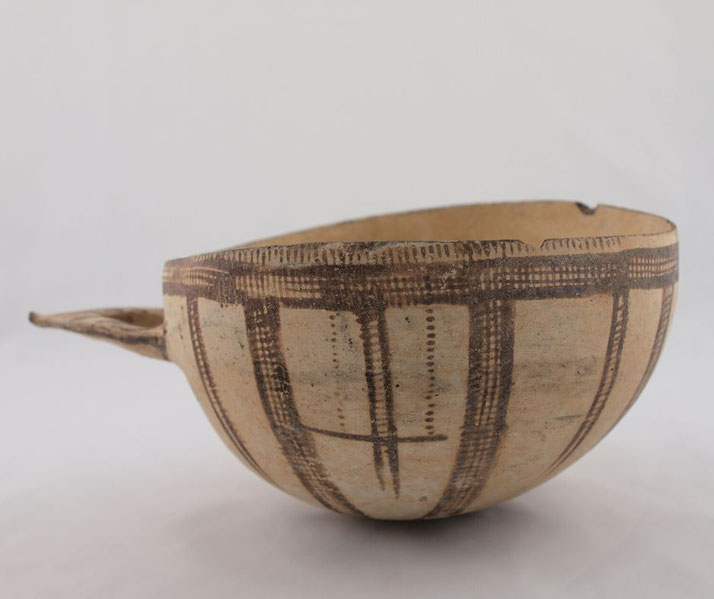What were the Stone, Bronze, and Iron Ages?

The Stone Age, Bronze Age, and Iron Age are three key eras in human history. Each age is named after the material people used to make tools and weapons during that time.
In this article, we will look at each of these ages more closely and we will include the key events and changes that happened during each one.
The Stone Age
The Stone Age is the earliest era, and it lasted from around 2.6 million years ago until 3,000 BC.
Stone provided the raw material for early tools and weapons: for instance, hand axes and spear points.
Since this period is particularly long, it is usually divided into three smaller stages: the Palaeolithic, Mesolithic, and Neolithic, which we will cover separately below.
Palaeolithic
The Palaeolithic is the first stage of the Stone Age, and it began around 2.5 million years ago.
It occurred during an era of extensive glaciation called the Ice Age, during which much of the earth was covered in snow and ice.
At this time, humans were hunter-gatherers. This mean that they did not live in one place, but frequently moved around to find food.
They hunted animals for meat and gathered fruits and vegetables, and they also used the stone to make the first tools and weapons.
However, the Palaeolithic period ended when the Ice Age ended, around 12,000 BC.
Mesolithic
The Mesolithic period followed the Palaeolithic, and it lasted from around 12,000 BC to 8,000 BC.
The Mesolithic is the middle part of the Stone Age, when the climate became warmer, and groups of people began to give up their hunter-gatherer lifestyles and chose to live in semi-permanent settlements.
In some areas, humans began to try farming and to domesticate animals, such as dogs.
This shift resulted in a new type of stone tool known as microliths, which were much smaller and more delicate than those of the Palaeolithic.

Neolithic
The Neolithic period was the last part of the Stone Age, and it lasted from 8,000 BC to 3,000 BC.
The Neolithic is sometimes called the New Stone Age, and it is when the very important event known as the Neolithic Revolution took place.
During this revolution, people in many parts of the world began to live in permanent settlements and to adopt larger-scale farming methods.
They also domesticated a wider range of animals such as sheep, goats, pigs, and cattle.
Focused farming techniques and animal domestication allowed the first cities to grow and led to the first great river valley civilisations.
First civilisations
The first river valley civilisations developed in Mesopotamia, Egypt, and the Indus Valley.
The Mesopotamian civilisation was the first to develop irrigation, which allowed more effective farming.
Meanwhile, the Egyptian civilisation was able to use lots of people to build massive projects like the pyramids of the Old Kingdom period.
Finally, the Indus Valley civilisation in India is known for its cities, such as Mohenjo-daro and Harappa.
The Bronze Age
Once the Stone age was other, the next age is known as the Bronze Age, which lasted from around 3,000 BC to 1200 BC.
The metal known as bronze replaced earlier stone materials, and it was quickly used for blades and implements, such as swords and axes.
Bronze is actually an alloy (i.e. a mix) of copper and tin, and it is harder than either of these metals when used on their own.
The Bronze Age was a time of great change, as people began to live in increasingly larger cities and to use horses for transport.
Importantly, the first writing systems also developed during the Bronze Age, when the Sumerian civilisation developed a form of writing known as cuneiform.
Cuneiform was followed by the Egyptian hieroglyphs, and then by the Phoenician alphabet.

The Iron Age
The Iron Age followed the Bronze Age, and during this time we saw the rise of major empires such as the Assyrians, Babylonians, Persians, and Greeks.
From about 1200 BC to 550 BC, iron became the dominant material for tools and weapons, including swords and ploughshares.
Iron became an important technology, especially in warfare, since iron weapons were stronger and sharper than bronze.
This allowed militaries to be far more effective, and could easily defeat people who still relied upon bronze weapons.
Other Iron Age developments included new forms of transport, such as the chariot.
Further reading
What do you need help with?
Download ready-to-use digital learning resources
Copyright © History Skills 2014-2025.
Contact via email
With the exception of links to external sites, some historical sources and extracts from specific publications, all content on this website is copyrighted by History Skills. This content may not be copied, republished or redistributed without written permission from the website creator. Please use the Contact page to obtain relevant permission.





